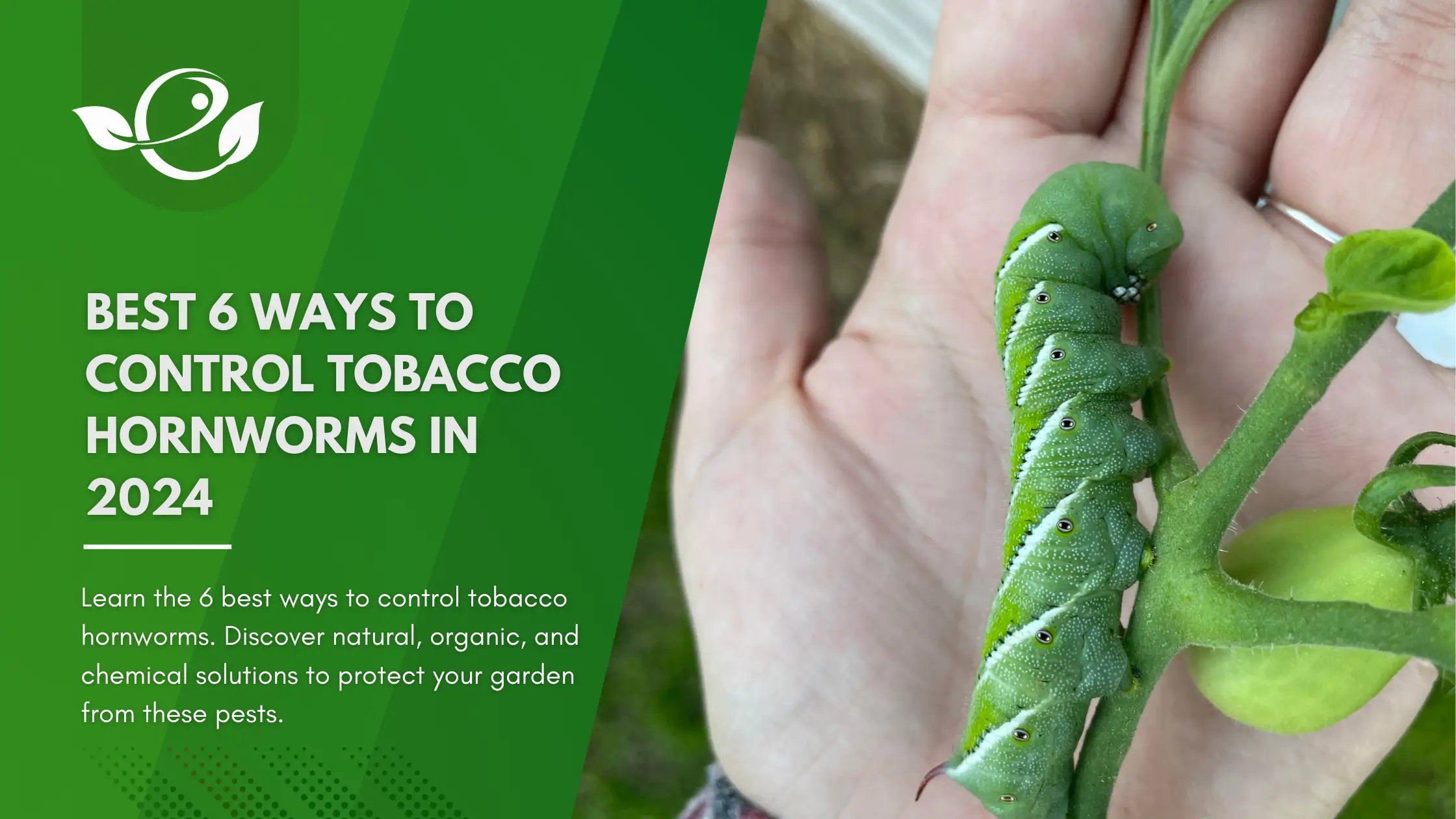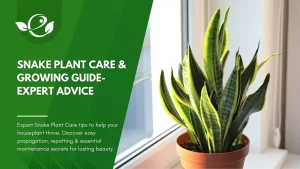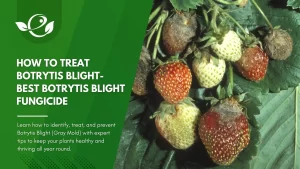Table of Contents
In the world of gardening and agriculture, few pests are as dreaded and destructive as the tobacco hornworm. Known for their voracious appetite and camouflaged appearance, these large green caterpillars are infamous for wreaking havoc on tobacco, tomatoes, and other plants in the Solanaceae family. Their ability to quickly defoliate crops and damage fruits makes them a significant threat to both backyard gardeners and commercial growers.
Controlling tobacco hornworms can be challenging, given their resilience and rapid development. But with the right strategies and a proactive approach, you can prevent these pests from turning your green spaces into barren landscapes. As 2024 brings innovative methods and refined techniques, it’s time to explore the most effective solutions for hornworm control.
In this guide, we’ll explore six proven methods that combine hands-on, biological, organic, and, when necessary, synthetic options to tackle tobacco hornworms. Whether you’re aiming for a sustainable, chemical-free garden or need a powerful response to a severe infestation, these strategies will help you protect your plants and restore harmony to your garden.
Symptoms
Caterpillars feed on young leaves and growing shoots, creating visible holes and external damage. Their presence is marked by dark droppings on the leaves. If you inspect the plant closely, you may see the green or brown caterpillars themselves. Caterpillars can eat all the leaves off a tobacco plant, leaving only the stem and main veins. During extensive outbreaks, entire fields can be left completely defoliated. With tomatoes, heavy infestations can result in the caterpillars feeding on the developing fruit, leaving behind large, open scars on the fruit.
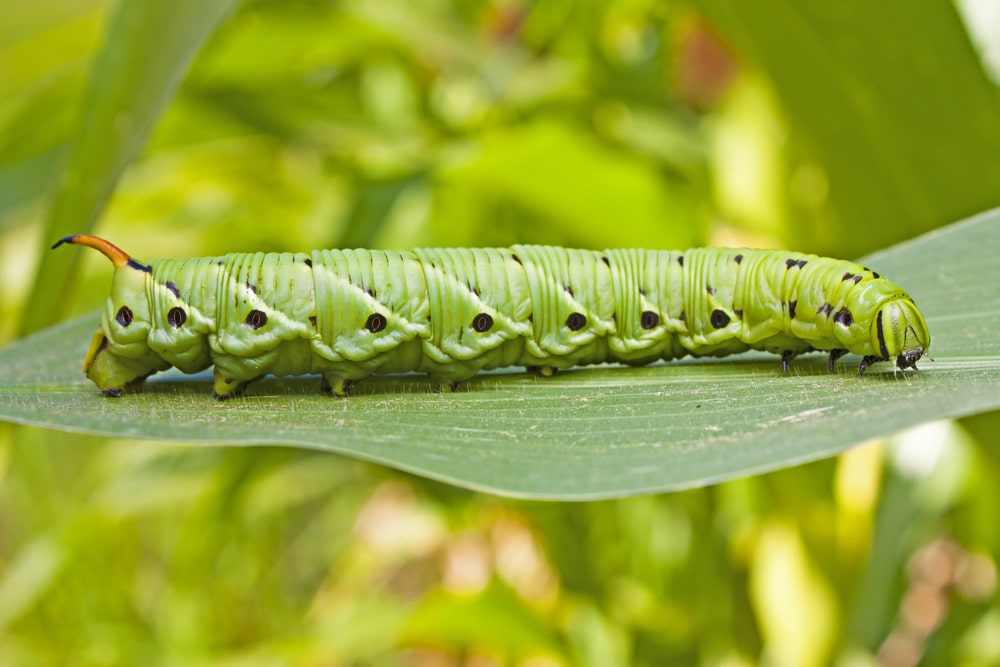
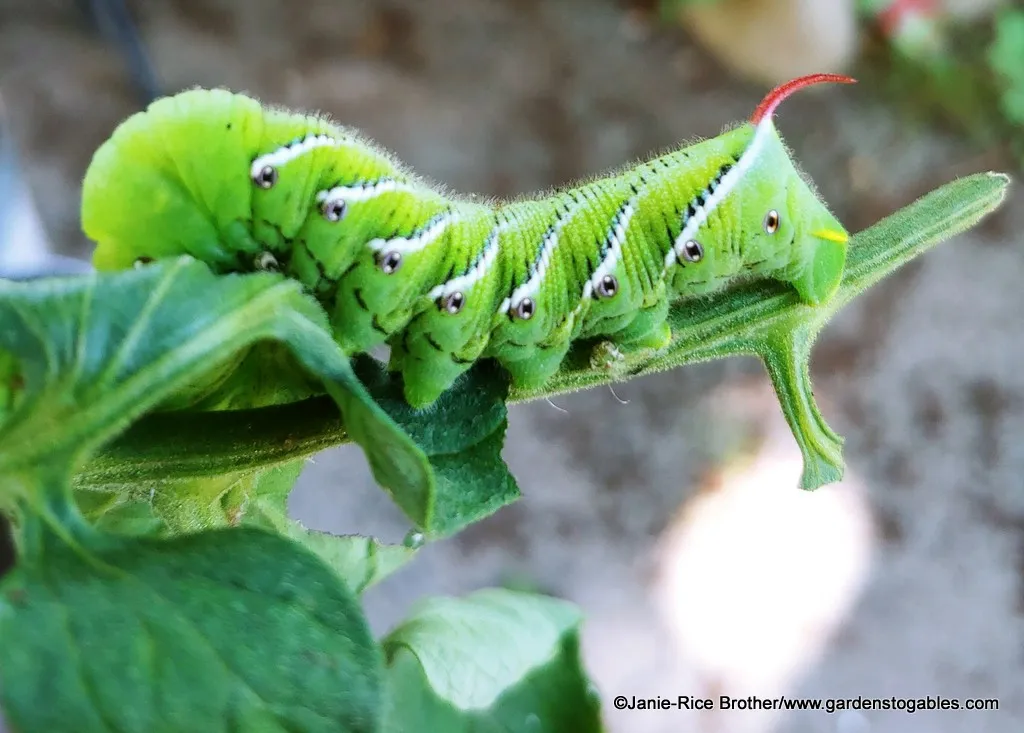
1. Handpicking and Manual Removal
Why Manual Removal Works
Handpicking is an age-old method for controlling pests that’s as effective as it is straightforward. Hornworms are large and easy to spot, especially once you know where to look. Removing them manually is cost-effective, doesn’t require any chemicals, and ensures that hornworms won’t return to munch on your crops.
Step-by-Step Process
If you find any tobacco hornworms on your plants, remove them by hand while wearing gloves, and place them in a bucket of soapy water to kill them.
- Inspect Plants Regularly: Check for hornworms early in the morning or evening when they’re most active. Look for signs of damage, such as stripped leaves or small black droppings on the ground.
- Use Gloves for Protection: Although hornworms are harmless to humans, wearing gloves can make handling them easier.
- Collect and Dispose of the Pests: Place hornworms in a bucket with soapy water to kill them quickly.
- Monitor Continuously: Make regular inspections part of your routine, as new hornworms can emerge.
Pros and Cons
- Pros: Cost-effective, eco-friendly, and safe for beneficial insects.
- Cons: Time-intensive and requires dedication, especially during peak hornworm season.
2. Biological Control with Beneficial Insects
Natural Predators for Hornworm Control
Nature has its own solutions for pest management, and beneficial insects can be one of the best ways to control tobacco hornworms. Predatory insects, particularly certain wasps and beetles, can naturally manage hornworm populations without the need for chemical interventions.
Recommended Beneficial Insects
- Parasitic Wasps (Cotesia congregata): These tiny wasps lay their eggs on hornworms. The wasp larvae feed on the hornworm, killing it and preventing it from causing further damage.
- Ladybugs and Green Lacewings: Both of these insects prey on hornworm eggs and larvae, reducing populations before they become a problem.
How to Introduce and Maintain Beneficial Insects
- Purchase and Release: You can buy parasitic wasps and ladybugs from gardening supply stores or online. Release them in your garden in the early morning or late evening when temperatures are cooler.
- Create a Habitat: Plant nectar-rich flowers like marigolds, daisies, and clovers to attract and retain beneficial insects.
Pros and Cons
- Pros: Sustainable, environmentally friendly, and effective over time.
- Cons: Requires suitable conditions and may take time for visible results.
3. Use of Organic Insecticides (BT – Bacillus thuringiensis)
How BT Works Against Hornworms
Bacillus thuringiensis, or BT, is a natural bacteria that’s deadly to caterpillars, including tobacco hornworms. Once ingested, BT causes the caterpillar to stop feeding and eventually die. This organic insecticide is effective and safe for humans, animals, and beneficial insects, as it targets only caterpillars.
Application Process
- Choose the Right BT Product: Look for products specifically labeled for caterpillar control.
- Spray on Leaves and Stems: Apply BT to the foliage where hornworms feed. Focus on the underside of leaves where larvae often hide.
- Reapply as Needed: BT breaks down in sunlight, so reapply every few days or after rain to maintain its effectiveness.
Pros and Cons
- Pros: Non-toxic, easy to apply, and specific to caterpillars.
- Cons: Requires frequent applications and may not be effective against adult moths.
4. Diatomaceous Earth as a Physical Barrier
Why Diatomaceous Earth Works
Diatomaceous earth (DE) is a natural powder derived from fossilized diatoms. It’s abrasive to insects, causing them to dehydrate and die upon contact. Sprinkling DE around the base of plants and on the soil can create a physical barrier that deters hornworms and other pests.
Application Tips
- Apply Lightly: Dust DE around the plants, focusing on the base and soil.
- Reapply After Rain: DE loses effectiveness when wet, so reapply after watering or rain.
- Protect Beneficial Insects: Avoid direct application on flowers to minimize harm to bees and pollinators.
Pros and Cons
- Pros: Non-toxic, effective as a barrier, and works on various pests.
- Cons: Needs reapplication and can harm beneficial insects if misapplied.
5. Crop Rotation and Companion Planting
Why Crop Rotation Helps
Crop rotation is a preventive measure that disrupts the life cycle of tobacco hornworms by moving their preferred food sources to different parts of the garden. By rotating crops annually, you reduce the chance of hornworms finding their favourite plants in the same location.
Companion Plants for Hornworm Prevention
Companion planting involves growing specific plants together to deter pests. Certain plants repel hornworms and attract beneficial insects that prey on them.
- Basil: Repels hornworms and other pests while enhancing tomato flavor.
- Marigold: Emits a scent that deters various pests, including hornworms.
- Dill and Parsley: Attract predatory wasps that target hornworms.
Pros and Cons
- Pros: Long-term solution, improves soil health, and reduces the need for chemicals.
- Cons: Requires planning and may not be a standalone solution for severe infestations.
6. Use of Synthetic Insecticides (As a Last Resort)
Choosing the Right Insecticides
For serious infestations where other methods have failed, synthetic insecticides can be a last resort. These products are formulated to target hornworms but may affect other insects if not used carefully. Always select products labelled for tobacco or tomato use and follow all safety instructions.
A number of chemical insecticides exist for the management of tobacco hornworms and other caterpillars. Malathion, diazinon, carbaryl, and fenitrothion are pesticides that target various stages of insect development, but they are particularly effective against the actively feeding caterpillar. When using pesticides or any chemical product, it is important to wear protective, including eye protection, and carefully read the label instructions. Regulations vary by country, so ensure you follow the specific guidelines for your area. This guarantees safety and increases the chances of successful application.
Safe Application Practices
- Follow Label Instructions: Always apply insecticides according to the manufacturer’s guidelines.
- Use Protective Equipment: Wear gloves, masks, and goggles to avoid exposure.
- Targeted Application: Spray only affected areas to minimize impact on beneficial insects.
Pros and Cons
- Pros: Quick action and effective in severe cases.
- Cons: May harm beneficial insects, requires careful handling, and should be a last resort.
Conclusion
Tobacco hornworms can be a formidable pest, but with the right mix of preventive and proactive measures, you can keep your plants safe. From handpicking to biological control with beneficial insects, organic solutions, and even synthetic options, there are various effective methods tailored to your specific garden needs.
For long-term success, consider implementing an Integrated Pest Management (IPM) approach. This means combining several methods, such as crop rotation, companion planting, and biological controls, for comprehensive protection. Regular monitoring and early intervention are key to controlling hornworms before they cause significant damage.
Choose the strategies that align with your gardening philosophy, whether it’s organic, hands-on, or a balanced mix. By following these six proven methods, you’ll be well-equipped to protect your crops and enjoy a thriving, hornworm-free garden in 2024.
Are tobacco hornworms bad?
es, tobacco hornworms are considered harmful, especially to plants in the Solanaceae family, which includes tobacco, tomatoes, and peppers. They have a large appetite and can defoliate plants quickly, leading to stunted growth, reduced yields, and in severe cases, plant death. Tobacco hornworms consume leaves and fruit, leaving behind large holes and droppings, which make plants more susceptible to disease. While they don’t pose a risk to humans or pets, their impact on plants makes them a significant pest for gardeners and farmers.
What does tobacco hornworm turn into?
A tobacco hornworm eventually transforms into a large moth called the Carolina sphinx moth (Manduca sexta), also known as the five-spotted hawk moth. This moth is known for its gray-brown wings and a wingspan of 3-5 inches. Adult moths primarily feed on nectar and are important pollinators, but their larvae (the hornworms) are highly destructive to crops.
What is the difference between a tomato hornworm and a tobacco hornworm?
The main differences between tomato hornworms (Manduca quinquemaculata) and tobacco hornworms (Manduca sexta) are in their appearance and the plants they typically target:
Color and Markings: Tobacco hornworms have a series of seven diagonal white stripes on their sides and a red or pink “horn” at the rear. In contrast, tomato hornworms have eight V-shaped white stripes and a blue or black horn.
Diet Preference: While both types feed on plants in the Solanaceae family, tomato hornworms are often found on tomatoes, while tobacco hornworms prefer tobacco plants. However, they can overlap in their food choices and habitats.
Though similar in behaviour and appearance, these distinguishing features help identify them accurately.
How long does it take for a hornworm to turn into a moth?
The complete life cycle of a tobacco hornworm—from egg to moth—typically takes 30 to 50 days, depending on environmental conditions like temperature and food availability. After hatching, the larval stage (the hornworm phase) lasts about 3 to 4 weeks, during which they feed voraciously. Then, they enter the pupal stage, where they transform into moths. The pupal phase lasts around 2 to 3 weeks before emerging as adult moths.
What kills hornworms naturally?
Several natural methods effectively control hornworms without chemicals:
Beneficial Insects: Parasitic wasps, like Cotesia congregata, lay eggs on hornworms, eventually killing them as the wasp larvae feed on the caterpillar.
Birds and Predators: Birds, spiders, and predatory insects like ladybugs and green lacewings consume hornworm larvae and eggs.
Handpicking: Removing hornworms manually is an eco-friendly way to control their population.
Diatomaceous Earth: This powder dehydrates insects upon contact, acting as a physical barrier to hornworms.
Is there a spray for hornworms?
Yes, there are organic and chemical sprays that target hornworms:
Organic Options: Bacillus thuringiensis (BT) is a commonly used organic pesticide that specifically targets caterpillars. Once ingested by hornworms, BT disrupts their digestive system, causing death. It’s safe for other insects and mammals.
Chemical Insecticides: For severe infestations, chemical insecticides labeled for caterpillar control can be used as a last resort. Always follow instructions to minimize harm to other insects and plants.
Will soapy water get rid of hornworms?
Yes, soapy water can help eliminate hornworms. You can fill a bucket with soapy water and drop handpicked hornworms into it, which quickly kills them. However, spraying soapy water directly on plants may also deter or kill hornworms, though it should be done with caution. Soapy water can harm plant leaves if applied in excess or during the heat of the day, so it’s best used sparingly.
Will neem oil get rid of hornworms?
Neem oil has some effectiveness against hornworms, especially on younger caterpillars. Neem oil acts as a repellent and disrupts the feeding and growth cycle of many pests, including hornworms. Spray neem oil directly on the plant, focusing on areas where hornworms are feeding. Reapply every few days or after rain for ongoing protection. However, neem oil may not completely eradicate large hornworms and works best as part of an integrated pest management approach.
